Note: Our reviewer put over 70 hours into Dragon Quest XI on PlayStation 4 last year, and has played roughly half of the main story on Switch, as well as some of the new content.
Dragon Quest XI was the first game announced for Codename NX back in 2015 and, over four years later, it’s finally arrived on what we now know as Nintendo Switch. The Dragon Quest series is one of the fathers of the RPG genre, and Dragon Quest XI S: Echoes of an Elusive Age – Definitive Edition is the first mainline entry to appear on a Nintendo home console since Dragon Quest VI came to Super Famicom in 1995. We’ve seen plenty of releases on Nintendo’s handhelds in the last couple of decades, but this marks the first time in a while that Nintendo fans have the chance to play a mainline Dragon Quest game on the big screen.
Fortunately, it was absolutely worth the wait, as Dragon Quest XI S is one of the finest JRPGs of the generation. Sticking to series tradition, it doesn’t reinvent the wheel, but it’s a nearly perfect example of an old school JRPG made for a modern audience.
Dragon Quest XI S clearly cares about you, the player, in the way that every element feels handcrafted to be easily accessible, yet surprisingly deep. The Switch version takes it a step further with extra content and quality-of-life improvements that make a big difference. Dragon Quest XI S is a massive JRPG that’s easy to get invested in thanks to its rewarding combat, lovable characters, and gorgeous world.
Classically Modern
Dragon Quest XI S nails the balance between classic JRPG elements and modern conveniences. It’s rigidly traditional from a gameplay standpoint — you’ll take part in hundreds of turn-based battles where you navigate through a deep menu to select attacks, spells, and items. It’s reminiscent of the Dragon Quests, Final Fantasies, and EarthBounds of yesteryear, but it brings the genre up-to-date with a number of enhancements.
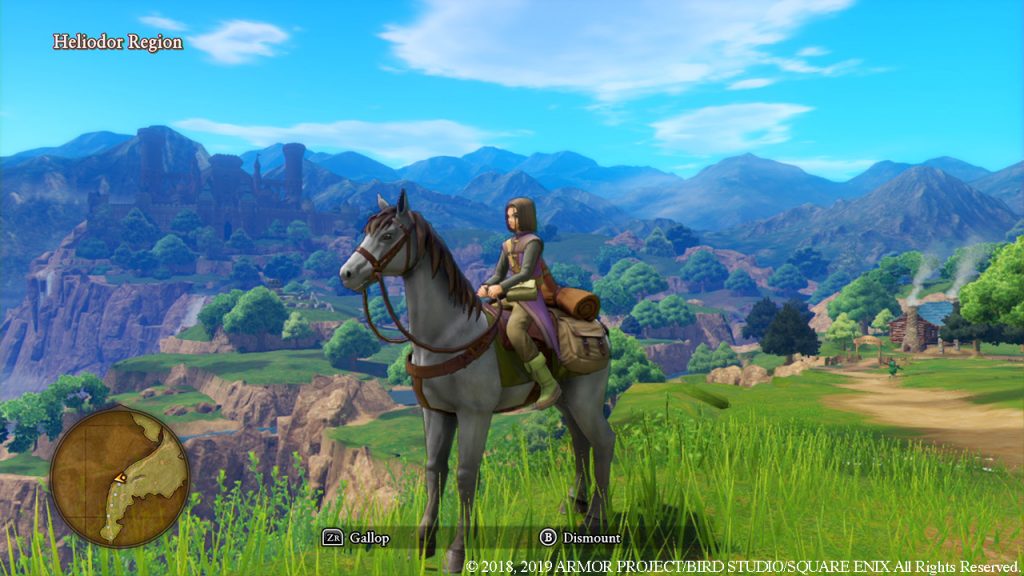
The combat largely sticks to the formula of previous Dragon Quest games, with a few key additions. Each character can execute a unique set of attacks, spells, and abilities during battle, as you’d expect from a classic JRPG. The combat sets itself apart with a new mechanic called Pep Powers. At any random time during battle, one of your characters can “Pep Up,” which is an enhanced state that grants boosted stats and access to a list of strong moves called “Pep Powers.” When more team members are pepped, you gain access to a stronger list of Pep Powers. Each Pep Power activates with a stylish cutscene that spices up the battle. Using Pep Powers to your advantage is key to win some of the tougher battles in the game, and it’s a fantastic feeling when one of your characters peps up at just the right time to turn the tide of a fight.
To make experimenting with different combos of characters even easier, your entire party gains experience equally. As long as a party member is alive at the end of battle, they’ll gain just as much experience as every other character, even if they sat on the bench the entire time. Since all of your characters will be around the same level, you have the flexibility to swap characters in and out of your lineup as you please. It’s fun to mix and match different fighters, and you can do that without ever having to worry about each fighter getting equal training time.
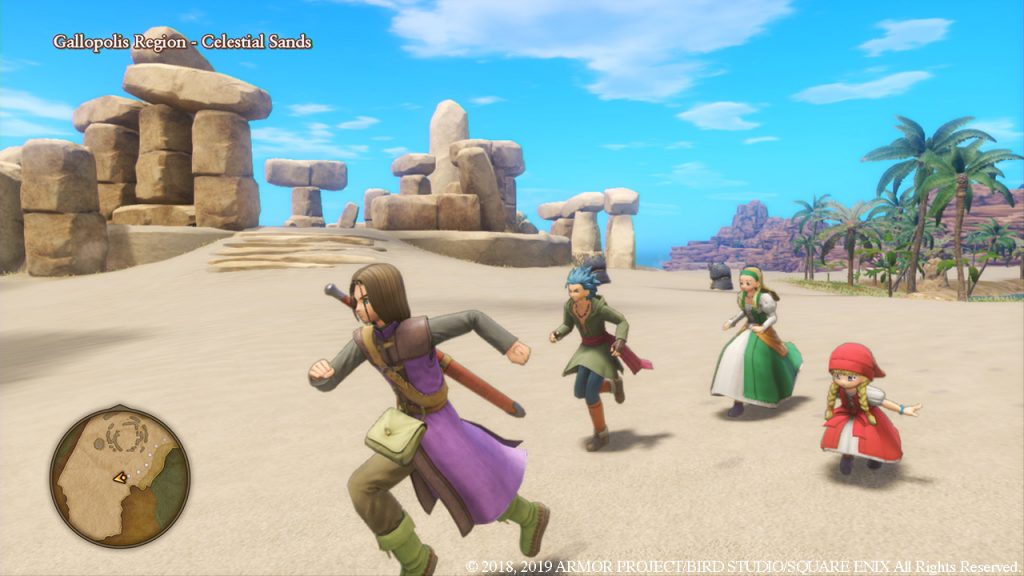
If you crave just a little more action during battle, you can turn on the active battle system which allows you to run around the battle zone during each fight. It doesn’t change the combat at all; it just gives your thumbs a little something extra to do during the turn-based encounters. You can also bump up the battle speed to make attack animations much faster. Apart from when you’re sailing, there are no random encounters if you’re playing in 3D mode, so you can pick and choose your battles wisely. You can’t avoid old school combat in this franchise that sticks to its roots, but Dragon Quest XI S shakes up standard turn-based systems just enough to feel fresh, and it may even sway skeptics of the genre.
You are the Luminary
The setup for the plot is pretty standard JRPG fare. The Luminary, who you may recognize as “Hero” in Super Smash Bros. Ultimate, must depart on an adventure to save the land of Erdrea the day after his coming-of-age ceremony. Along the way, he meets a cast of colorful characters who devote themselves to assisting the Luminary’s mission. The skeletal structure of the plot is very familiar, but the meat of the story actually features quite a few exciting twists and turns that I didn’t see coming, particularly in the second half of the game.
The main quest’s pacing is sublime throughout most of Dragon Quest XI S. The beginning doesn’t drag nearly as much as some JRPGs tend to, and the game is constantly throwing new story beats, characters, and locations your way. I never felt like I spent too much time in one place in Erdrea, and the scenery and characters are consistently interesting in each location.
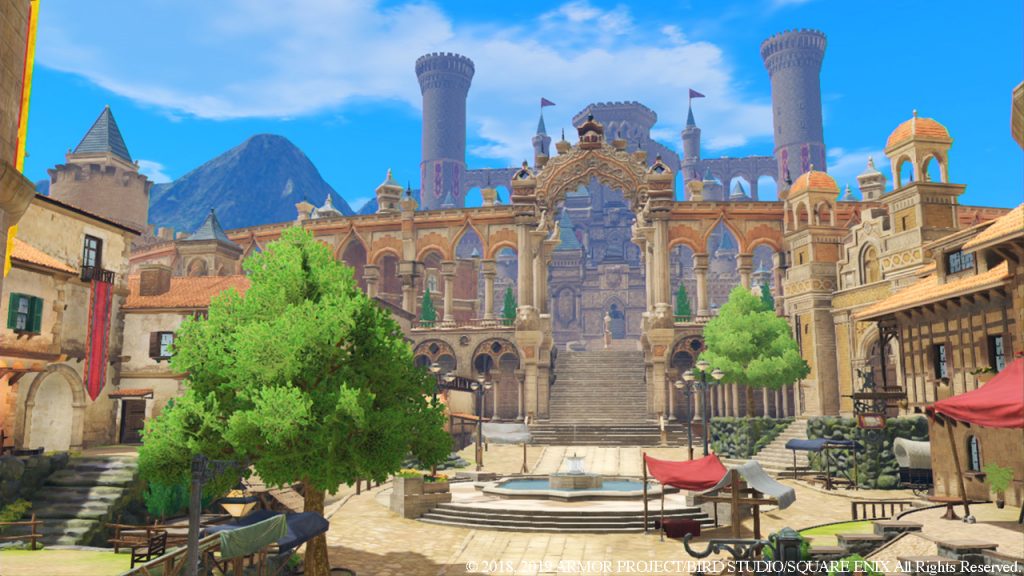
The main exception to this is the endgame grind, which is one of the only drawbacks to Dragon Quest XI S. About two-thirds through the game, the pacing screeches to a halt, and the game forces you to revisit old dungeons to prepare for the ending. You’ll also have to grind dozens of levels to be strong enough for the finale. Grinding isn’t necessary throughout the rest of the journey, so it’s a pretty jarring shift when the late game relies so heavily on leveling up. Luckily, there are some ways to gain levels quickly later on, so it’s not a huge problem.
Despite those minor late-game pacing issues, the entire plot feels carefully crafted from start to finish. It takes its time revealing big plot moments, and it’s not afraid to dedicate entire chapters to smaller stories that bring life to the characters and towns across Erdrea. My personal favorite is the tale of a mermaid who longs to be reunited with her long-lost love from a nearby village. It’s up to the Luminary and his companions to untangle their complicated past, and the ending tugs on the heartstrings. These memorable moments add to the stellar world-building in Dragon Quest XI S. The cutscenes flow nicely, and the voice acting works well in both English and Japanese. Besides some spotty accents at times, the English voices are pleasant to listen to, and Japanese voices are an option for the first time in the Switch version. Overall, the localization is fantastic, with hilarious enemy names like “Cruelcumber,” an evil cucumber, just adding to the charm of this world.
What really drives the plot and tone are the characters. The Luminary’s sidekicks all have unique backstories that reveal themselves throughout the game, and it’s fun learning about your companions on a personal level beyond their statistics.
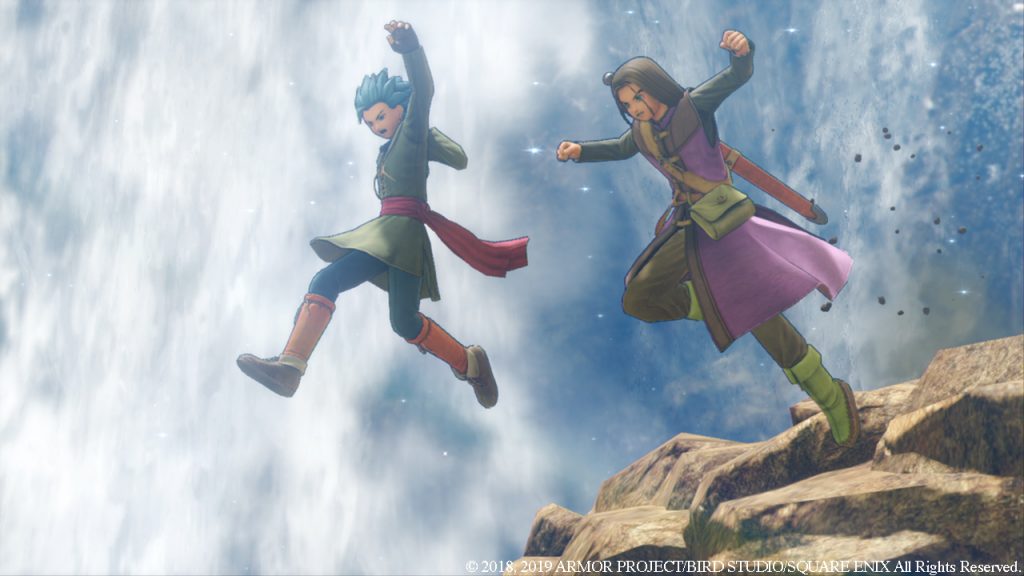
That’s not to say managing your party’s stats isn’t a blast, though. Every character can become proficient with multiple weapon types, and it’s up to you to spend your skill points wisely to develop your fighters the way you want. Between swords, spears, wands, axes, knives, and more, there’s no shortage of weapons to wield and skills to learn. If you change your mind, you can easily reallocate skill points to a different branch of each character’s skill tree, for a small fee. Like the rest of Dragon Quest XI S, the flexibility is delightful, and the developers clearly want to make it easy to play how you want.
The dev team also understands that they’ve created a very long game, and you may have to step away from time to time to play something else. So, every time you boot up the game, a short recap plays to reacquaint you with the story and the characters. I took a few weeks off from Dragon Quest XI last year on PS4, and I was extremely appreciative of the recap that immersed me right back in the world.
What a wonderful world
Speaking of the world, Erdrea is one of my favorite video game areas in recent memory. The incredible variety of terrain gives every area its own flavor, and I was always excited to see what the next location had in store. Traveling through Erdrea isn’t a fully open-world experience though; rather, the map is made up of a series of interconnected open spaces that are packed with enemies and secrets.
The top-notch world-building in Dragon Quest XI S helps blend each individual area together into one cohesive, believable world. Quests often include NPCs who make you go to other areas in Erdrea. Additionally, you can find and read books in towns that often add to Erdrea’s lore. For example, hours after meeting a man named Noah, you find a book in town that adds to his backstory. Callbacks and references like this add to the believability of Erdrea’s world.
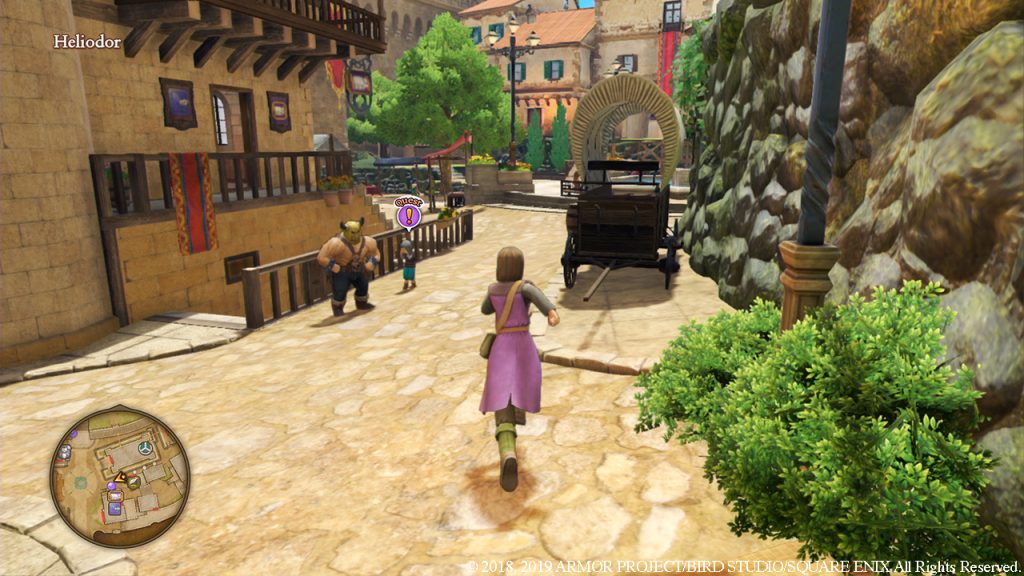
It’s always worthwhile to seek out treasure and sparkly spots in the overworld. Besides earning necessary crafting materials, exploration is valuable simply so you can soak in the beauty of Dragon Quest’s landscapes. From snowy hills to grassy plains, Erdrea’s overworld is gorgeous, and it’s extremely rewarding to take your time and soak in the view.
The towns are just as diverse and beautiful as the overworld. You can talk to townspeople, raid their dresser drawers for gear and materials, and take on side quests. Some towns have fun side activities, like horse racing in Gallopolis or playing poker, roulette, and slots at the casino in Puerto Valor. Each town has its own cultural identity which makes you actually feel like you’re traveling around the world. Some towns even have their own dialects, like an entire set of townspeople who speak exclusively in Haiku.
Unfortunately, the side quests are largely forgettable. They usually consist of fetch quests or simple combat trials and are mostly worth skipping. The bonus rewards are nice, but you’ll be just fine without them.
The Switch Version
After playing through about half of the Switch release of Dragon Quest XI, it’s safe to say that it is the definitive way to experience this adventure. With a handful of quality-of-life improvements and a few new features, fans who waited for this release will be rewarded with an overall better experience.
The game looks and runs great on Switch in both docked and handheld mode. Pop-in is noticeable, especially in towns with a lot of buildings and NPCs, but the performance never really suffers beyond that.
You can play through the adventure entirely in a sprite-based 2D art style. If you love classic, top-down Dragon Quest games with random encounters, this mode is perfect for you. It tells the same story in the same world, but it transports the look and feel straight back to the glory days of the SNES. You can flip back and forth between 2D and 3D at any time, but there’s a pretty significant catch: swapping between 2D and 3D forces you to start from the beginning of a chapter, and the game doesn’t make it very clear where each chapter begins and ends. This clunky system is an unfortunate blemish on an otherwise amazing addition to the game.
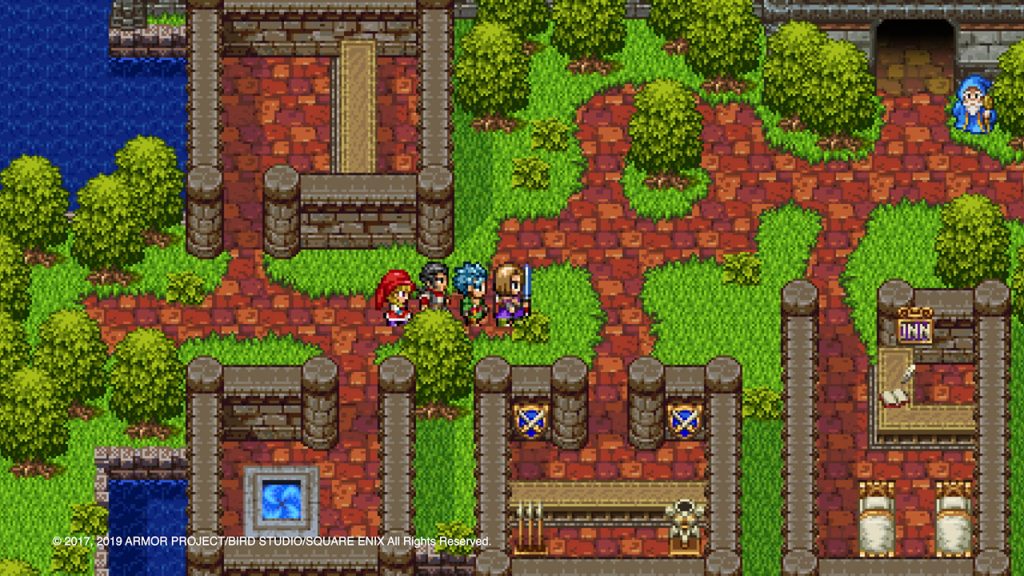
Another addition sends the Luminary and Co. back in time to the worlds of the first ten installments in the Dragon Quest series. This mode can only be played in the 2D art style, so it’s a good way to experience the classic graphics if you’re playing the main game in 3D. Visiting old Dragon Quest towns in the 2D art style is a nostalgic dream, and this new feature carries the best side quests in the game. The homages to the old games accomplish two things: they’re extremely nostalgic for longtime fans of the franchise, and they may also inspire new players to go back and experience older games in the series.
New missions that let you play as your party members have also been added, but I haven’t progressed far enough in the Switch version to reach that point.
Thanks to items you acquire pretty early on in the game, you’re able to expedite tasks like forging items and calling for a horse. In last year’s PS4 version, you had to go to a campsite to forge equipment or a horse bell post to call for a ride. Now, you can do both of these at the press of a button. Additionally, if you don’t have all the materials to forge a specific item, you can purchase them straight from the forging menu, rather than having to track them down around the overworld. This doesn’t work for some rarer materials, but it’s nice to save some time by throwing money at the problem. Streamlining these processes sound like small improvements, but they add up to mean a lot over the course of a 60-70 hour JRPG.
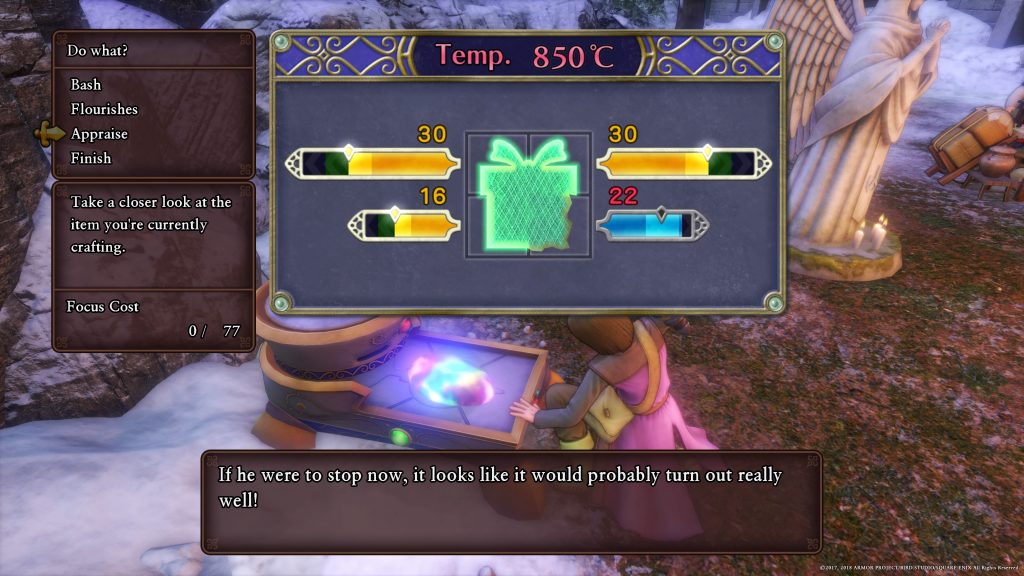
Dragon Quest XI S also touts a fully orchestrated soundtrack, which is a significant improvement over the original’s synthesized tracks. Still, the soundtrack is one of the weakest parts of the game. While most of the music is fine, I wish there was more variety in the soundtrack as a whole. You’ll hear one main overworld theme for hours on end, and most of the towns share the same music as each other. It’s exhausting to hear the same tracks over and over in such a lengthy game, especially when it’s a tune I’m not too fond of.
There are plenty of other small improvements, like the ability to skip cutscenes (which is great for a second playthrough) and wear costumes over your equipped armor. All of these minimal improvements make this new version a markedly better experience when compared to the original.
A nearly-flawless JRPG
The Switch release of Dragon Quest XI is truly definitive, with meaningful additional content and game-changing tweaks and enhancements. It’s not without flaws though, as the music can be grating and the side quests can feel tedious. Still, those are small gripes in an otherwise masterful experience that was worth the wait.
Dragon Quest XI S was always on my mind when I wasn’t playing, and that’s one sign of a truly amazing adventure. Erdrea draws you in with its warm characters, fascinating locales, and intriguing plot; and it’s easy to lose hours upon hours in this world without even realizing it. At its core, Dragon Quest XI S is an old school JRPG that feels like the culmination of decades of tradition and refinement packed into one game.
Dragon Quest XI S should be remembered as one of the best JRPGs of the generation — not because it pushes the genre forward, but because it reminds us why we fell in love with role-playing games in the first place.
Leave a Comment
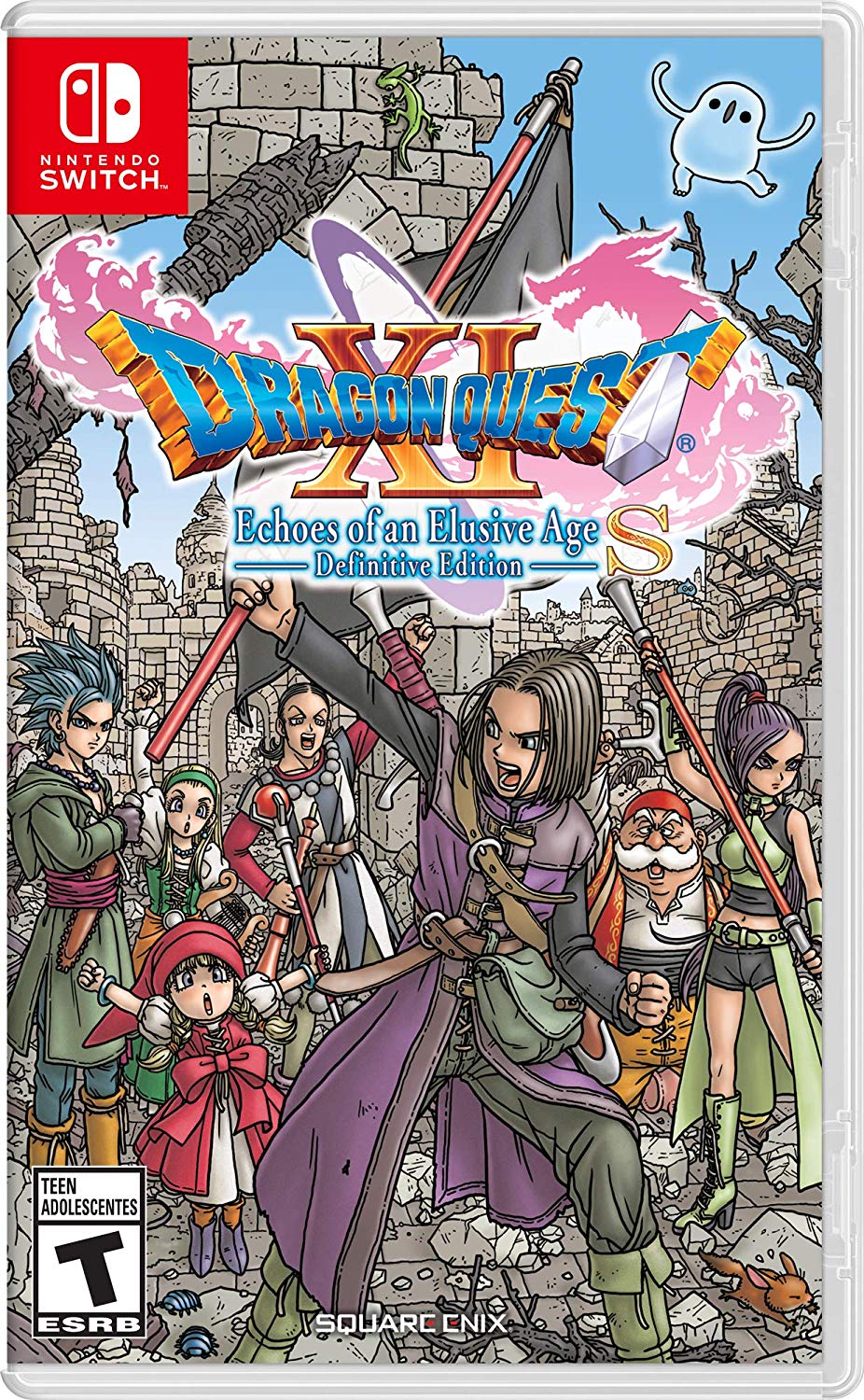
System: Nintendo Switch
Release Date: September 27, 2019
Categories: Role-Playing
Publisher: Nintendo
Developer: Square Enix


